Rashes are a common feature of multiple rheumatologic disorders, and the methods used to identify various rashes commonly seen in patients living with rheumatic disease may play a significant role in determining their diagnosis and the efficacy of disease management.

Katharina S. Shaw, MD, Academic Dermatologist at Perelman School of Medicine at the University of Pennsylvania, reviewed commonly observed rashes in rheumatologic patients to guide providers on how to distinguish and treat them during Rashes in Rheumatology.
This session is available on demand for registered ACR Convergence 2023 participants through Oct. 31, 2024, on the meeting website.
Dr. Shaw highlighted the recently discovered utility of anifrolumab in adult and adolescent patients with recalcitrant cutaneous lupus erythematosus (CLE), which she characterized as one of the most exciting developments related to CLE in the past 15 years.
Anifrolumab is a monoclonal antibody that targets type 1 interferon (IFN) receptors. It was approved by the U.S. Food and Drug Administration (FDA) for systemic lupus in 2021 based on the results of the TULIP-2 trial, in which 49% of patients achieved at least a 50% reduction in the CLE disease area and severity index (CLASI) compared to 25% in the placebo group.
“It’s also worth noting here that the drug was very well tolerated as a once-a-month, 30-minute infusion,” Dr. Shaw said.
Dr. Shaw’s clinic received approval to use anifrolumab in June 2022 and subsequently put more than 20 patients with systemic lupus and recalcitrant CLE on the drug over several months. Dr. Shaw said the improvement in her patients’ conditions was stunning.
“These are patients who have had recalcitrant discoid lupus for decades, failed multiple prior agents, and within just a few weeks of starting anifrolumab, almost uniformly, they had an excellent response to treatment,” she said.
Due to these positive results, her institution received a formulary exception to dose adolescents as young as 12 with anifrolumab. The results were similarly encouraging.
“We’ve been able to demonstrate that same rapid and sustained improvement in CLE in our adolescent patients,” Dr. Shaw said.
She explained the next step with anifrolumab would be to expand the scope of its FDA approval. Currently, the drug is only approved for systemic lupus. Dr. Shaw said there is interest in developing an FDA-approved option for CLE with a phase 3 randomized control trial currently in the works.
She also discussed the importance of multimodal therapy to treat MDA-5 dermatomyositis. Dr. Shaw explained that treating this condition can be a balancing act due to the potential for multiple critical manifestations. The most feared complication related to MDA-5 dermatomyositis is the onset of rapidly progressive interstitial lung disease (ILD).
“Our No. 1, 2, and 3 priority in these patients is to treat and protect the lungs,” Dr. Shaw explained.
While prescribing immunosuppressant agents that protect patients’ lungs takes precedence, these drugs may not do anything to help other potential symptoms of MDA-5 dermatomyositis, such as vasculopathy. Providers must search for other adjunctive agents to combat these unaddressed symptoms in such cases.
The MDA-5 dermatomyositis phenotype can manifest through signs like oral ulcers, tender palmar macules, non-scarring alopecia, and vascular pathogen ulcerative skin lesions. Common clinical presentations include arthritis and a high risk of developing ILD.
“Early recognition is key to preventing significant morbidity and mortality,” Dr. Shaw said.
She also provided strategies to aid clinicians in distinguishing eosinophilic fasciitis (EF) from systemic sclerosis. Dr. Shaw explained that current data suggests that 70% of patients with EF are initially misdiagnosed with systemic sclerosis.
Both conditions manifest through the tightening of a patient’s skin, indicative of the fibrosis that can accompany EF or systemic sclerosis, she noted. A patient’s distal digits are the key to unlocking a clear diagnostic distinction.
“Skin elasticity is going to be preserved in EF, whereas sclerodactyly will be present in systemic sclerosis,” she explained. “So, always, always go to the distal digits, pinch that skin, and you’ll be able to distinguish between EF and systemic sclerosis.”
Register Today for ACR Convergence 2025

If you haven’t registered for ACR Convergence 2025, register today to participate in this year’s premier rheumatology experience, October 24–29 in Chicago. All registered participants receive on-demand access to scientific sessions after the meeting through October 31, 2026.
